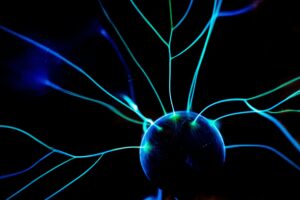The theory of Morphic Resonance was proposed by Rupert Sheldrake in 1981. It presents a holistic view of nature where a collective memory binds the different living organisms around the world. Also, no matter the location or time, a particular organism has access to this information, which is essential for its survival.
Even with the promising idea of collective memory, the concept of Morphic resonance by Rupert Sheldrake is controversial. It is because this theory is based on the major genetic models. On top of that, there is no proper way at present to discover the collective memory and its presence in the world.
The Theory Of Morphic Resonance By Rupert Sheldrake
The theory postulates the existence of something beyond the gene pool of living organisms. This memory or field can influence the form and morphic features of species apart from their genetic structure. Moreover, each experience of a single individual adds to the net collective memory of the same species. Thus, different behaviours, morphological changes, and habits are inherited across space and time.

If this theory is true, then it opens doors to a new field of evolutionary biology. A field where nature learns through repetition and experience, not just genetics. However, it is very difficult to get to the bottom of the situation regarding what morphic resonance proposes since it is a theory beyond regular biology.
The Scientific Basis Of The Morphic Resonance Theory
The major proof of the existence of collective memory across space and time is through experimentation. Moreover, there are plenty of studies conducted by Rupert Sheldrake on different aspects of life—biology, psychology, and even physics. On top of that, the theory also influences fields like quantum mechanics and introduces the concept of evolving habits instead of fixed genetic rules.
Examples & Experiments Indicating The Theory
There are different experiments that you should see for yourself in order to learn about Morphic resonance. All these examples are heavily studied and indicate the major postulates of the theory.
- The 100th monkey effect.
- Rats in mazes.
- Crystal formation over time.
One Of The Most Controversial Theories In Existence
Even though the Morphic Resonance theory gives a different and fascinating view of nature, it has faced much criticism over time. The major one is the lack of empirical evidence, which is the fundamentals of scientific observation/experimentation. On top of that, it is termed pseudoscience because of the theory’s association with spiritualism and metaphysics. Lastly, there are other points below which are challenging the basis of this theory.
- Violation of Established Scientific Principles
- No Clear Mechanism
- Failed Replication of Experiments
- Sheldrake’s Rejection of Materialist Science
- Lack of Predictive Power
What If The Morphic Resonance Is True In Principle
If this theory is true, then it will redefine everything from biology to psychology and your understanding of evolution. In addition, it will have a great impact on learning, memory and the concept of consciousness, which will open answers to spirituality. However, it is a far-fetched idea beyond comprehension for most scientific communities. However, one should never underestimate the workings of nature and the universe as they have always surprised human civilization.
Key Takeaways From The Article
• The theory proposed by Rupert Sheldrake in 1981 posits a collective memory that binds different living organisms worldwide.
• The theory is controversial due to its divergence from major genetic models.
• It postulates the existence of something beyond the gene pool of living organisms.
• The scientific basis of the theory is through experimentation in biology, psychology, and physics.
• The theory also influences fields like quantum mechanics.
• Experiments indicating the theory include the 100th monkey effect, rats in mazes, and crystal formation over time.
• The theory has faced criticism for lack of empirical evidence and association with spiritualism and metaphysics.
• If true, the theory could redefine biology, psychology, and understanding of evolution, impact learning, memory, and the concept of consciousness.
FAQs
What is Rupert Sheldrake’s theory of morphic resonance?
The theory suggests that memory is inherent and can be accessed by two individuals of the same species without any physical relation.
Who discovered morphic resonance?
Rupert Sheldrake proposed the theory of morphic resonance in 1981.
What is an example of morphic resonance?
Plant growth patterns into specific forms is an example of morphic resonance.

